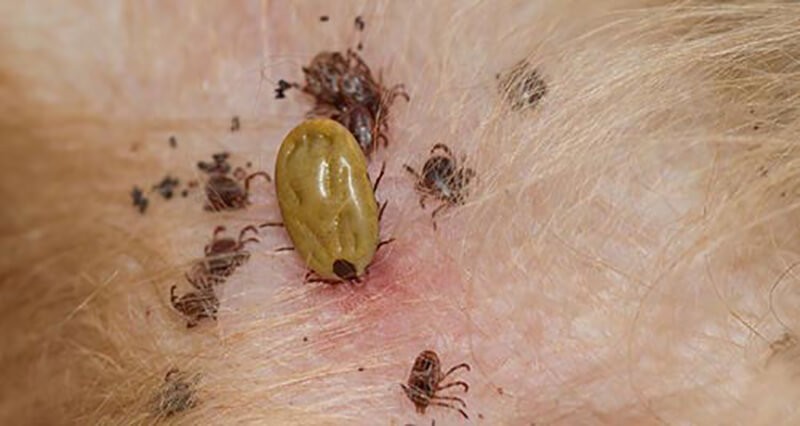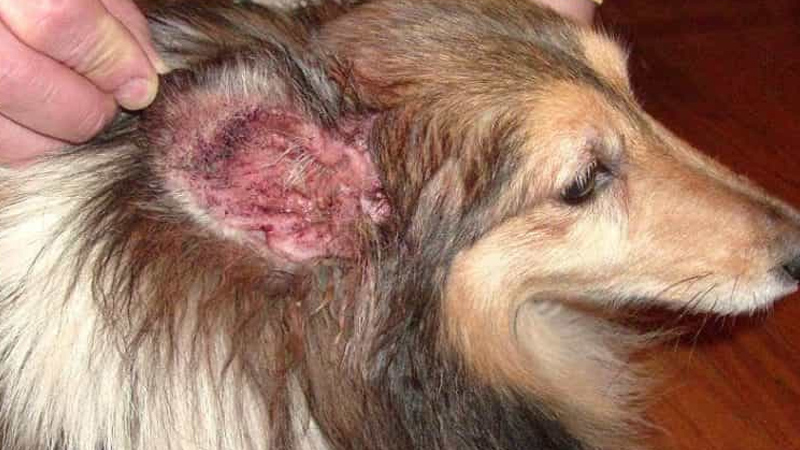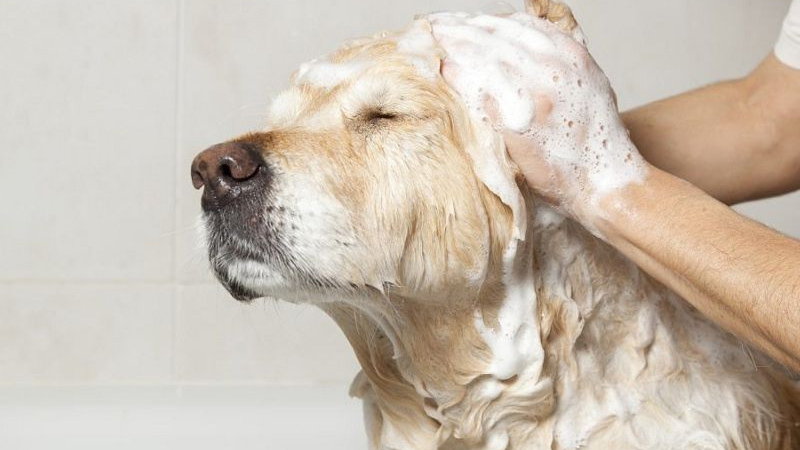There are many health issues that can affect your dog’s well-being, and one common condition is dog skin fungus. While it is not life-threatening, it can cause discomfort and aesthetic issues as affected dogs tend to shed their fur. Today, we will share everything you need to know about dog skin fungus, including its causes and treatments.
1 Causes of Dog Skin Fungus
Dog skin fungus occurs when your dog’s bedding is not kept clean, providing an ideal environment for fungal growth.
 Causes of Dog Skin Fungus
Causes of Dog Skin Fungus
Wet fur and skin can also lead to skin fungus, commonly seen in dogs with long and thick fur.
Overbathing your dog can also contribute to skin fungus. A dog’s skin has a protective layer of oil that helps maintain moisture. Overbathing can disrupt the skin’s pH balance, leading to sensitive and vulnerable skin, and reducing its natural defenses.
Additionally, using human shampoo on your dog can be a cause. Dog fur and skin have beneficial bacteria that can be eliminated by human shampoo, leading to discomfort and potentially skin fungus.
 Parasites such as ticks and mites can cause itching
Parasites such as ticks and mites can cause itching
Parasites such as ticks and mites can make your dog itchy and uncomfortable. These parasites feed on your dog’s blood, leading to anemia and skin damage. This creates a favorable environment for bacterial growth.
For more information, check out our article on effective ways to prevent and treat dog skin problems!
Related: Effective and quick solutions
2 Signs and Symptoms of Dog Skin Fungus
 Signs of Dog Skin Fungus
Signs of Dog Skin Fungus
Your dog will frequently scratch the affected areas. They may also roll on the floor or ground to relieve the itch in hard-to-reach spots.
When affected by skin fungus, your dog’s skin may develop scales and redness. In more severe cases, there might be pus, hair loss, and skin necrosis. The necrotic areas can develop a foul odor and become ulcerated.
As a result of these symptoms, your dog may become more aggressive or restless.
3 Treating Dog Skin Fungus
Skin conditions in dogs often present similar symptoms. The best course of action is to take your dog to a veterinarian for a proper diagnosis and treatment.
 Treating Dog Skin Fungus
Treating Dog Skin Fungus
If your dog has a mild case of skin fungus, you can try the following home remedies:
-
Clean your dog’s bedding regularly.
-
Trim your dog’s fur to facilitate the treatment process.
-
Choose appropriate treatment products and dog-safe shampoo.
-
Apply prescribed antifungal medications as directed.
-
Bathe your dog regularly, at least once a week, using a suitable shampoo.
-
Boost your dog’s immune system with nutritious foods like eggs and milk.
-
Monitor your dog’s condition and look for any changes or improvements daily.
-
Eliminate parasite infestations such as ticks and fleas.
4 Preventing Dog Skin Fungus and Scales
 Preventing Dog Skin Fungus and Scales
Preventing Dog Skin Fungus and Scales
To reduce the risk of dog skin fungus, dog owners should focus on keeping their dog’s living area clean and well-ventilated, and bathing their dog regularly. Use shampoos with a suitable pH level for dogs. It is also important to monitor your dog’s health and schedule regular check-ups to detect any issues early on.
Dog skin fungus can be a nuisance for your furry friend, but with timely detection and treatment, your dog can make a full recovery. We hope this article has provided you with valuable information to care for your beloved pet.
You may also like:
Analyzing Distinctions Between Covid-19 and Seasonal Flu Respiratory Illnesses
Have you been feeling under the weather lately? It might be difficult to tell whether it’s Covid-19 or flu symptoms you are experiencing. Fortunately, there are a few identifying factors that can help us differentiate between these illnesses. In this article, we’ll discuss the key differences between Covid-19 and seasonal flu.






































